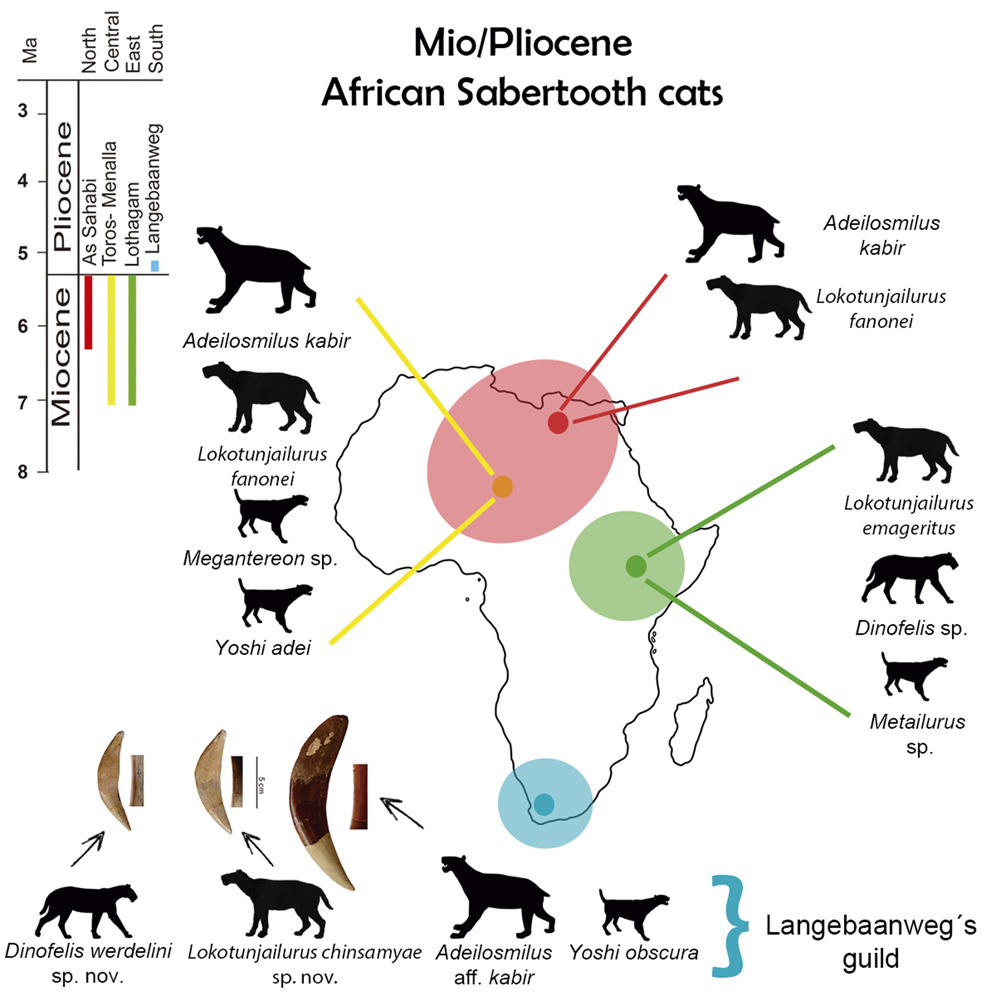Sabertooth cats were prowling around much of the world around 6-7 million years ago during the Pliocene, with fossils of many different species found across Africa, China, Europe, and North America. Now, scientists have examined one of the world’s largest collections of Pliocene fossils and found two new species.
The fossil collection has come from Langebaanweg, north of Cape Town on the southwest coast of South Africa. The “E” Quarry in particular can shed light on environmental changes in the time between the Miocene and the Pliocene. This “E” Quarry has produced fossils of over 230 different species. However, the sabertooth cat fossils from this area have not been extensively studied.
“The known material of sabertooths from Langebaanweg was relatively poor, and the importance of these sabertoothed cats has not been properly recognized,” said senior author Alberto Valenciano, a palaeontologist at Complutense University, in a statement. “Our phylogenetic analysis is the first one to take Langebaanweg species into consideration.”
Two new species have been described from this fossil collection: Dinofelis werdelini and Lokotunjailurus chimsamyae. Other members of the Dinofelis genus are well recognized from the fossil record and the team were hoping to find a new species given their previous work. Lokotunjailurus had only ever been seen in other parts of Africa before this research, suggesting they may have had a wider distribution across Africa.
A family tree of the sabertooth species was then constructed based on the physical traits of these different species. The team compared the presence of teeth, jaw and skull shape, and tooth structure to find out the relationships between the different sabertooth species.

The new species in this study are at the bottom in blue.
Image Credit: iScience Jiangzuo et al.
The findings reflect the changing environment in Africa during the Pliocene. Machairodont cats are more suited to open grassland environments, while Metailurini cats are thought to have been more suited to forested environments. While both Metailurini and Machairodont cats were found, the higher proportion of Machairodont species, which are better adapted for running at high speeds, suggests that the area was transitioning to more of a grassland environment at this time.
The researchers also found that the groupings of different sabertooth found in the Langebaanweg fossils are similar to a grouping found in Yuanmou, China. The team even think that the Longchuansmilus sabertooths in China could be closely related to the Lokotunjailurus species.
“This suggests that the ancient environment of the two regions was similar or that there was a potential migration route between the Langebaanweg and Yuanmou,” said first author Qigao Jiangzuo, a palaeontologist at Peking University.
The team think that even more species could be hiding in the fossil collections from Langebaanweg and plan to do more studies to discover more sabertooth evolutionary relationships.
“The two new sabertooths are only an example of the numerous unpublished fossils from Langebaanweg housed at Iziko in the Cenozoic Collections,” added Romala Govender, a curator and palaeontologist at the Iziko Museums in South Africa. “This brings to the fore the need for new and detailed studies of Langebaanweg fauna.”
The paper is published in iScience.
Source Link: Two New Species Of Sabertooth Cat Identified From 5-Million-Year-Old Fossils